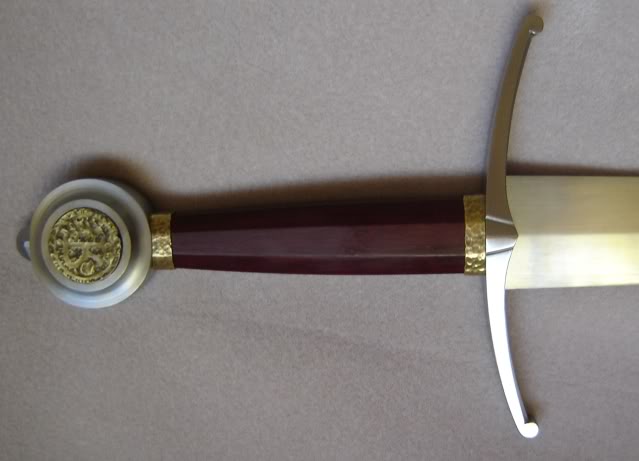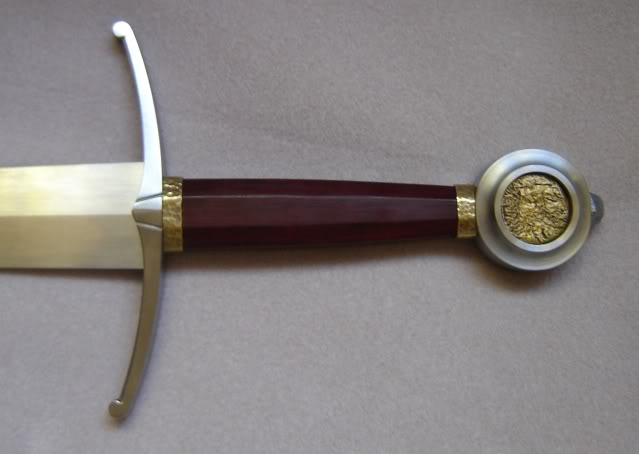
overall view


closeup of hilt
Now if you can for minute - take another look at the first photo and make a guess as to how large this blade is. Realizing there is some distortion in the photo - however I don't think you can tell necessarily how large the blade is without a reference point or object. I make this assertion because this blade is an older ATrim that is .....................
.
.
.
.
.
................... 22 inches in length. At one time Gus made small blades as part of blade sets. These small blades were generally on the order of 20-24 inches long, with overall lengths on the order of 26-30 inches. I really love these blades, however, I have found that with standard hilt components, the blade's POB was too close to the hilt, giving it a "large dagger" feel with an inappropriate pivot point and balance. This is why I turned to Gabriel, because I know that one of Gabriel's specialties is in fine models at consistent scaling; and I just had this feeling that if given properly scaled hilt components, this blade would feel like a proper sword. Note that Oakeshott has documented a number of these smaller swords, and although initially labeled them as swords for young boys, later in his copious footnotes he stated that he ultimately believed them to simply be riding swords, or swords to carry about town or at market..... easily carried - yet fully effective weapons. And to this end, I think our experiment was correct, with Gabriel's new work on this blade, it has the feel of a sword again, both in terms of its balance and its pivot points.
weight: 700 g
Overall length 29 inches
Blade length 21.75
POB 2.75
COP 17.5 (very stiff sword so have to use the gentle edge tapping method to get the node)
PP when held at cross 18, near to, but just out in front of the COP
As far as aesthetics, most of my swords and scabbards are rather plain, but in this case I wanted a more highly refined look, with samorodok inset into J pommel, type 9 cross, small ferrules, and faceted hardwood grip. On one side of the pommel the samorodok is incuse, while on the other side it stands out above the rim of the pommel, with the intent that this side could be used as a seal for wax (note the backwards 'R' in the samorodok on that side - don't ask me how he did that :cool: )
As always all comments welcome. My main point was that proper balance in a sword is in part dependent on its hilt components; and I think this particular experiment was very conclusive in that regard. tr
edit: below is the sword next to an Albion Burgundian
